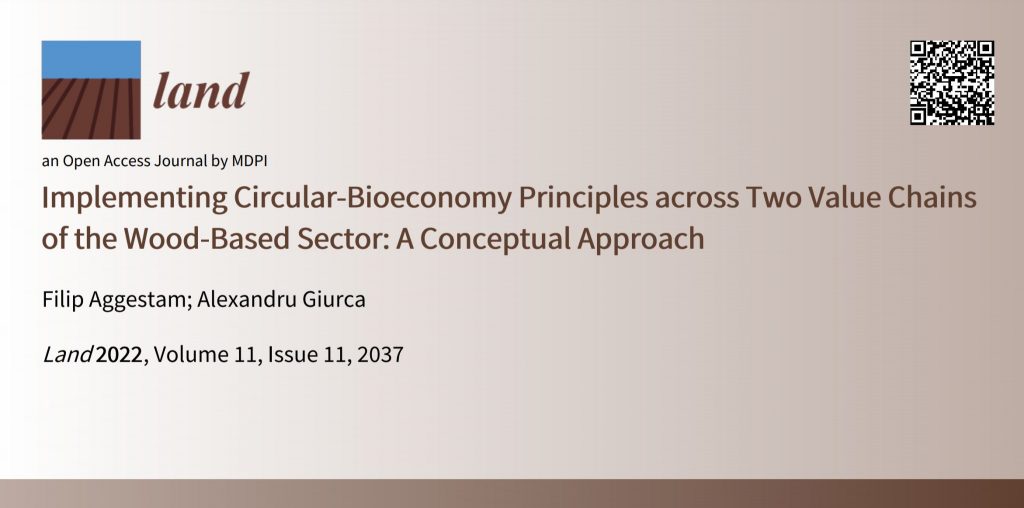Implementing Circular-Bioeconomy Principles across Two Value Chains of the Wood-Based Sector: A Conceptual Approach
The wood-based sector has the potential to contribute significantly to the circular bioeconomy. This paper examines the potential for implementing circular bioeconomy principles across two value chains, covering five sectors: “sawnwood”, “bioenergy”, “construction”, “paper and pulp”, and “cellulose-based fibres and plastics”. The qualitative value chain analysis is limited to the material flow and demonstrates that a circular approach requires transformation across entire value chains. Implementing circular bioeconomy principles will require new business models, cooperation across sectors and companies, and the application of new technologies and management tools.
More importantly, the results demonstrate that more applicable tools and methods are needed to analyse circularity. The results likewise confirm prevailing conceptual ambiguities surrounding the circular bioeconomy concept, such as the relationship between circularity and sustainability, which would need clarification. For example, circularity does not equal sustainability, nor guarantees economic viability for the wood-based sector. The paper argues that a circular wood-based system needs tailored governance approaches as there are no one-size-fits-all solutions. The wood-based sectors will also need to account for sustainability criteria and the natural limitations of wood (as a material) to close value retention loops.
